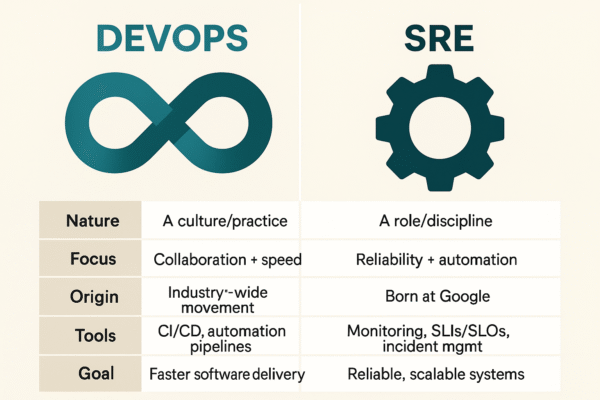| Availability | SLA/SLO Target | Error Budget | Error Budget per Month (30 days) | Error Budget per Quarter |
|---|---|---|---|---|
In today’s fast-paced technological landscape, reliability is a key concern for businesses and organizations of all sizes. Downtime can be costly and lead to a loss of trust from users. Site Reliability Engineering (SRE) has emerged as a methodology to address these challenges and ensure that services meet their reliability targets. One of the fundamental concepts in SRE is the error budget, which allows development teams to strike a balance between innovation and stability.
Why Error Budgets Matter
An error budget is a predefined allowance for errors or downtime that a service can experience while still meeting its reliability requirements. It is essentially a risk-management tool that defines how much risk a team is willing to tolerate. By setting an error budget, organizations empower their development teams to take risks and innovate, while still maintaining a high level of reliability.
In this article, we will explore error budgets in-depth and provide guidance on how to calculate and use them effectively. Whether you’re new to SRE or seeking to optimize your error budget policy, this comprehensive guide will equip you with the knowledge and tools needed to unlock the power of error budgets.
How to use an error budget
An error budget is a useful tool for managing and mitigating errors in any project or system. To effectively use an error budget, start by setting clear and realistic goals for error rates or tolerances. This will serve as a baseline for measuring and tracking errors. Next, regularly monitor and analyze the error data to identify patterns or trends. This will help in prioritizing areas for improvement. Additionally, allocate the error budget wisely, focusing on critical components or processes that have the greatest impact on overall performance. Finally, communicate the error budget and its progress to stakeholders, ensuring transparency and accountability. By following these steps, you can effectively utilize an error budget to drive continuous improvement and optimize system reliability.
SRE Downtime Formula
Downtime = (Total Time the Website was Down/Total Time the Website was Monitored) x100
This formula is used to calculate the total amount of downtime experienced by a system or service over a given period. By taking into account factors such as the number of incidents, the duration of each incident, and the impact on user experience, the Downtime Formula provides a quantitative measure of system reliability. This valuable metric allows SRE teams to assess the effectiveness of their efforts in minimizing downtime and improving overall system availability.
Error Budget Policy
An error budget policy is a crucial component of any organization’s approach to managing software reliability. It sets a predetermined threshold for acceptable errors or downtime within a specific timeframe. The policy allows teams to prioritize their efforts and resources effectively, ensuring that they can balance innovation and stability. By defining an error budget, organizations can encourage experimentation and iteration, empowering teams to take calculated risks while maintaining a high level of reliability. This policy fosters a culture of learning from mistakes and continuously improving the product or service, while also providing a clear framework for managing reliability goals and expectations.
Conclusion
In conclusion, error budgets are a powerful tool that enables organizations to strike a balance between reliability and innovation. By implementing an error budget policy and effectively managing error budgets, teams can cultivate a culture of accountability and drive continuous improvement. With a well-defined error budget strategy in place, organizations can confidently navigate the complex landscape of modern service reliability.
Remember:
- Error budgets provide a predefined allowance for errors or downtime.
- Error budgets enable innovation while maintaining reliability.
- Monitoring and measuring reliability through SLIs and SLOs is essential.
- Error budgets require alignment and collaboration within development teams.
- Incident management and learning from outages are crucial for improvement.
With these key principles in mind, teams can confidently embrace error budgets and unlock their full potential.


